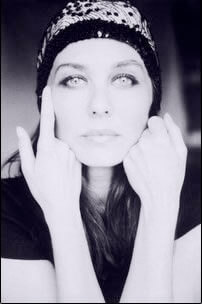Cathleen Naundorf is a French German photographer. In the late 1980s, she graduated from photography studies in Munich. She worked as a photo assistant in New York, Singapore and Paris in the following years, before she started traveling in 1993 to such destinations as Mongolia, Siberia, Gobi Desert and the Amazonas headwaters in Brazil. The results of these insightful pictures have been included in eight publications of renowned publishing houses. Inspired by her encounter of and longstanding friendship with Horst P. Horst, Cathleen Naundorf early on turned to fashion photography. As of 1997, she started photographing backstage Paris fashion shows for Condé Nast. Since 2005, Cathleen Naundorf has worked on her haute couture series “Un rêve de mode” focusing on seven couture houses : Chanel, Dior, Gaultier, Lacroix, Saab, Valentino and Philip Treacy. Thanks to her outstanding pictures, Cathleen Naundorf got the privilege to choose gowns from the couturiers’ archives for her elaborate and cinematic productions. This work got published in "The Polaroids of Cathleen Naundorf", Prestel Edition, 2012.
She works with large format cameras like Plaubel or Deardorff for her shootIngs and use mostly Polaroid or negative films. Cathleen Naundorf is working passionately on Haute Couture and Luxury Prêt-à-Porter. Her work got published in magazines like Harper's Bazaar, Tatler, VS Magazine or American Express.
Cathleen Naundorf's work is represented by the Hamiltons Gallery in London.
